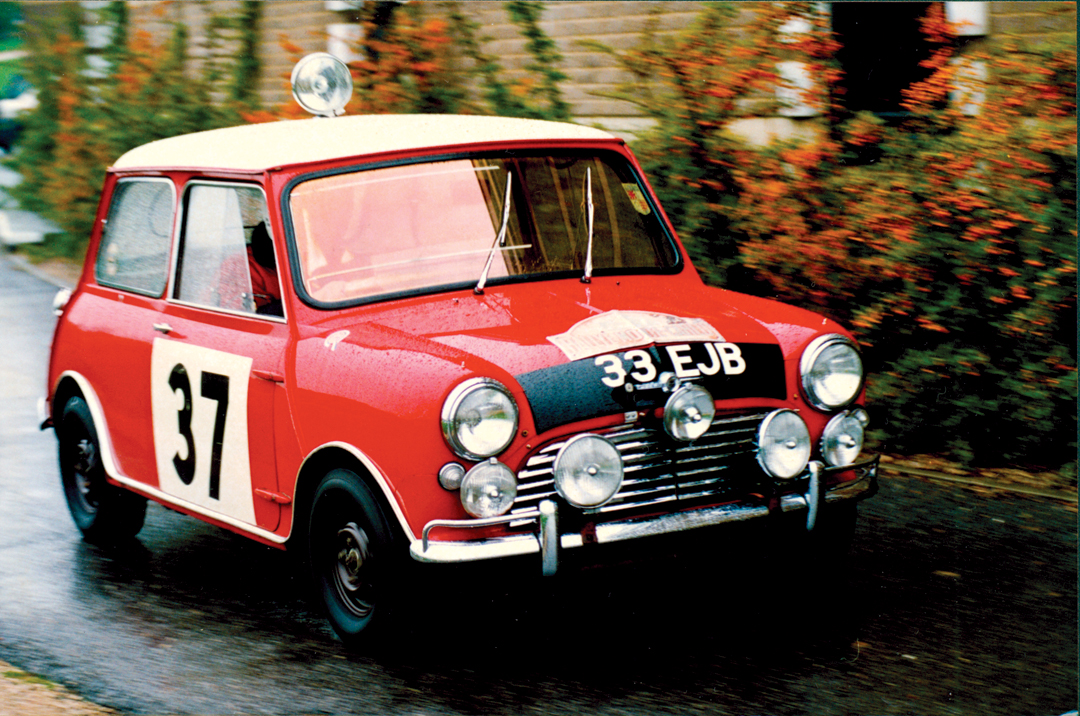The British are usually all for the underdog and just love a giant killer. Well, they certainly got their money’s worth with the cheeky little Mini Cooper S, 10-ft long, 4-ft 5-ins high and powered by a zesty transverse, 4-cylinder, 1,275-cc engine. This tiny car, which was originally designed to sound the death knell for the bubble cars that infested Europe at the time, went on to dominate international rallying from 1964 to 1967. It blew away all the bigger, more-powerful machinery on no fewer than 18 international rallies. These included the prestigious Monte Carlo, which the car won three times—but don’t say that to a British rally fan of the period. He might suddenly turn violent, because, without a doubt, he believes the Mini Cooper S won the Monte four times not three, and that Monegasque/French skulduggery cheated the little buzz box out of its 1966 victory.
John Cooper, another of Enzo Ferrari’s garagisti, was the hero of the hour when Sir Alec Issigonis finished developing his four-seater people’s car, which some genius named the Mini. Aided and abetted by the likes of Stirling Moss, Roy Salvadori and Jack Brabham, John’s Cooper-Climaxes were giving a good account of themselves in F1 by 1958 and would go on to win the 1959 and 1960 Formula One Constructors’ World Championships, no less. So, logically, John was asked to breathe a little more life into the car and transform it into the Mini Cooper, which came in three different flavors—997, 1,071 and 1,275-cc. The 1275 S went into production in early 1964 and the British Motor Corporation’s Competitions Department quickly laid its hands on enough of them to go for a Group 2 homologation. And that led to a close working relationship with Cooper.
No Subscription? You’re missing out
Get immediate ad-free access to all our premium content.
Get Started



